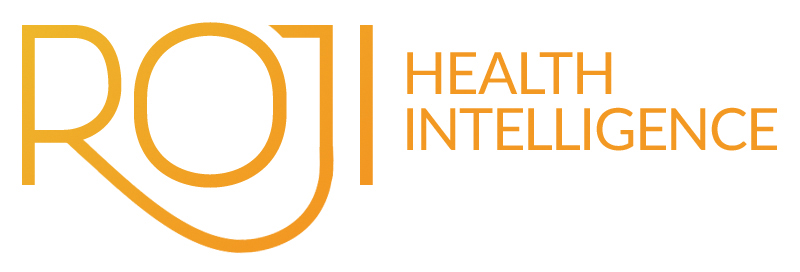
What if your best route to viability was the high-risk path you feared the most, because that failure might destroy you?
That’s the question Accountable Care Organizations (ACOs) have been asking this week—whether to participate in Medicare’s new Direct Contracting (DC) initiative. With a shift in payments from Fee for Service (paid per-provider service), to Global Capitation (paid per-beneficiary), DC completely changes the incentives for the health care system.
Whether Direct Contracting is a boon or a bust to ACOs depends on their ability to control the costs of patient care long-term—and whether they have the leverage to do so. How ACOs answered that question this week will be interesting to evaluate, since applications for Direct Contracting were due February 25. But one certainty is that Direct Contracting and its payment mechanisms of Global and Partial Capitation, now introduced by CMS, won’t be going away anytime soon.
The transition to providing care to patients under a financial risk structure—especially capitated payments—is complex. And the road isn’t well traveled by all provider groups or all ACOs. Over the next several years, we will see capitation emerge in voluntary models created by Medicare, Medicaid, health plans, and employers. And we’ll also see fixed payment mechanisms become take-it-or-leave-it and a permanent fee structure for many arrangements, when purchasers and budgeteers demand it.
Here we begin a series of articles to examine Direct Contracting and why this option may be the best path for many. In future articles, we’ll address not only how ACOs can make DC work for themselves and their patients, but also how the resulting stable population of patients enables providers to advance medicine.
It’s time to prepare.
ACOs Have Not Convinced CMS of Long-Term Value
ACOs originated as CMS’s solution to health care cost-control by engaging providers in a mutually beneficial savings plan. But ACOs have been struggling since then to reduce historic levels of patient care costs. Although there are 517 Shared Savings and 41 Next Generation ACOs, escalation of Medicare expenditures has continued. While there has been progress in achieving more savings, ACOs have still fallen short of convincing CMS of their ability to rein in health care costs to the extent needed.
The slow ramp-up of savings, generated to a larger degree by small physician-led ACOs, failed to instill confidence in the overall shared savings model. It’s a stretch to imagine that small physician-led ACOs can do enough to support a nationwide Medicare cost containment program. Independent physician-led organizations are increasingly rare in an environment where the majority of physicians are now employed—mainly by hospitals, whose ACOs have less favorable results. Even if those hospital-led ACOs can realign incentives and resources to lower costs, it will almost certainly take a long time to reach the CMS goal.
Additionally, large consolidated health systems have actually increased per-patient costs. Their slower transition to ACOs and lower savings results have generated more CMS concern about the ACO shared savings model. The result: the late 2018 “Pathways To Success” required that ACOs accept downside financial risk if they failed to meet expenditure targets.
Are ACOs at Risk of Losing Status in Medicare’s Value-Based Health Care Program?
Some industry experts believe that the future of ACOs could be in doubt. The highest ACO risk model, Next Generation ACO, is set to expire at the end of 2020 unless renewed by CMS. However, CMS has recently challenged savings results for these ACOs, citing a study that claims that costs have actually increased.
Given this environment and the inevitable disagreement between CMS and providers over the pace of implementing financial risk, CMS’s April 2019 announcement of a Direct Contracting model signaled to many that ACOs are at risk of losing their central status in Medicare’s Value-Based Health Care program.
Now that Direct Contracting Entities (DCEs) are defined to include ACOs as well as other similarly governed organizations, ACOs must face the question of whether they should apply or not—and if so, whether Global or Partial Capitation is the better choice.
The National Association of ACOs has appealed to CMS for additional time before implementation, continuation of the existing risk model for NGACOs, and better information about the program’s methodologies. While it is unlikely that CMS will grant extra time, that decision will depend on how many ACOs apply for Direct Contracting and whether the program would benefit by either extensions or adding rounds of applications.
ACOs Should Consider Their Biggest Competitive Threat: Medicare Advantage
By any measure, the largest and fastest growing alternative to traditional Medicare is Medicare Advantage (MA, which now covers more than a third of all Medicare beneficiaries, or 22 million individuals. By contrast, ACOs cover 12.6 million, including Next Generation ACOs.
From CMS’s perspective—frequently and publicly stated—MA has been a beneficial program for Medicare. Further, it allows CMS to fix expenses; payments to MA plans are capitated. Many of those plans are increasingly capitating their participating providers.
MA plans are allowed extra benefits (like dental services and hearing care) to pass on to enrollees, and those enrollees generally have full coverage, often without any copayments. Enrollees are voluntarily signing up for MA; they are not attributed based on their medical visits.
There is little doubt that as MA continues to grow and gain leverage in contract negotiations with providers, it will affect the resources of those providers. As is the case with employee coverage, tiered networks will exclude providers. There will be restrictions, such as step-wise therapy recently allowed by CMS for MA plans.
ACOs who have not created an option that can compete competitively on costs will have trouble competing with MA for patients. Their providers will be choosing financial risk or capitation in one way or another, via Medicare Advantage or through a Direct Contracting Entity (DCE). It’s worth noting that under commercial plan contracts, there is no “methodology” shared by the health plan about risk methodologies, the capitation calculations, and so on—all issues that ACOs have raised about Direct Contracting. In the private sector, it’s all about the provider’s negotiating leverage and a perceived “market” cost.
The Chaos of Change is Not Accidental for Health Care
If great changes are preceded by chaos, the strategy that CMS has pursued has been effective. Within Medicare’s Value Program are multiple models for paying and organizing health care, in various stages of testing to determine which will have the volume and incentives needed to reduce cost:
- Shared Savings ACOs;
- Next Generation ACOs;
- Direct Contracting;
- Primary Care First;
- CPC+;
- Specialty Care Models like Oncology Care and Advanced Kidney Care;
- Bundled Payments.
Using multiple models to promote change may be confusing, but it spurs action. It creates momentum, energy, discussion, and eventual acceptance of certain changes. Some of these initiatives are on-ramps to fee changes, like bundled payments. Others are designed to get providers seriously engaged in the cost of care.
Direct Contracting Also Provides Opportunities for Providers
Some ACOs have approached Direct Contracting as an opportunity, but others are more reactive to risk of potential losses. The fact is this: Either path may be viewed as perilous to individual ACOs, because of risks from provider inaction. We’ll examine fall-out from some ACO decisions in a future article.
But we should not miss the larger opportunity that providers have to steer the direction of health care itself. Advancing clinical science without commoditizing health care is essential. Yes, of course, health care has costs, but health care is more than the sum of its financial transactions.
Providers must have the independence and funding to study and improve patient care through applied science, data, and, especially, new medical technology that promise to reduce costs and speed diagnosis and treatment. These initiatives were enabled by a lucrative Fee For Service reimbursement but are at risk of being depleted under capitated payments, unless providers control the distribution of dollars under Global Capitation. That can only happen if the health care system accepts leadership and takes financial control of costs associated with patient populations, because that arrangement also provides the opportunity to do something new.
That is why it’s so important for ACOs, the front line of improving accountability in health care, to appreciate and advocate for the opportunity afforded by Direct Contracting. What could become possible if health care organizations invested more than just administrative and insurance functions in their ACOs/DCEs, and viewed them as the engine for measuring and advancing medicine in their patient population?
How do you see these opportunities? If you have thoughts on ACOs as Direct Contracting Entities, I’d love to incorporate them. Please contact me at [email protected].
Founded in 2002, Roji Health Intelligence guides health care systems, providers and patients on the path to better health through Solutions that help providers improve their value and succeed in Risk.
Image: Sebastien






